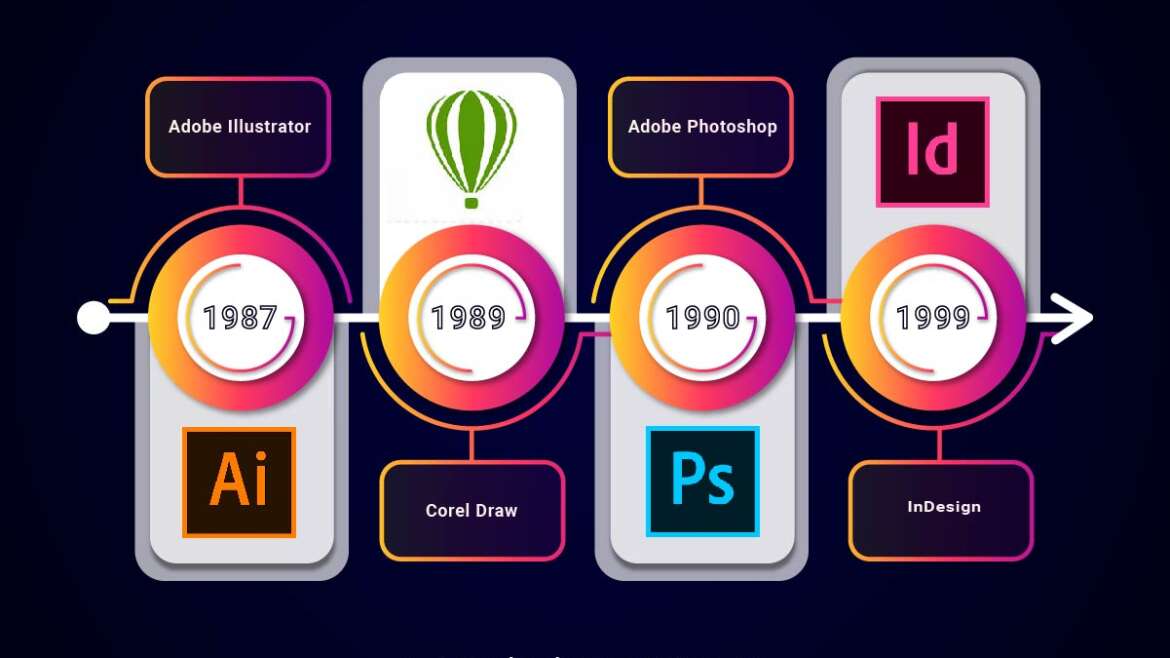Course Title: GRAPHIC DESIGN
1. Course Prerequisites
Basic Computer Skills
- Operating Systems:
- Familiarity with Windows and Mac OS, including file management, system navigation, and software installation.
- Software Applications:
- Proficiency in using common software such as Microsoft Office (Word, Excel, PowerPoint) for basic tasks and documentation.
- Understanding of internet browsing and email usage.
Artistic Foundation
- Design Principles:
- Basic understanding of design principles such as color theory, typography, and composition.
- Traditional Drawing:
- Basic drawing skills, including sketching and illustration using traditional tools like pencils, pens, and sketchpads. This is beneficial but not mandatory.
Software Knowledge (Recommended)
- Adobe Creative Suite:
- Familiarity with Adobe Photoshop, Illustrator, and InDesign, including basic functions and tools.
- Other Design Tools:
- Knowledge of alternative design software such as CorelDRAW, Sketch, and Figma is advantageous.
- Portfolio (Optional):
- A collection of previous work or projects showcasing any relevant design or artistic experience.
2. what you will learn
Technical Skills
- Adobe Photoshop:
- Mastery of photo editing, retouching, and compositing techniques.
- Proficiency in using layers, masks, filters, and adjustment tools.
- Adobe Illustrator:
- Ability to create and manipulate vector graphics for logos, icons, and illustrations.
- Skills in using pen tools, shapes, paths, and type tools.
- Adobe InDesign:
- Competence in creating multi-page documents, layouts, and templates for print and digital media.
- Understanding of typography, grids, and styles.
Design Principles
- Color Theory:
- Deep understanding of color relationships, harmonies, and psychology.
- Ability to apply color effectively in various design contexts.
- Typography:
- Mastery of type selection, pairing, and hierarchy.
- Skills in creating readable and visually appealing text layouts.
- Visual Storytelling:
- Ability to convey messages and emotions through visual elements.
- Skills in using imagery, composition, and design elements to tell a story.
Project Management
- Concept Development:
- Skills in brainstorming, ideation, and developing creative concepts.
- Ability to translate client briefs into visual solutions.
- Project Execution:
- Proficiency in planning, organizing, and executing design projects from start to finish.
- Ability to meet deadlines, manage time effectively, and deliver high-quality work.
- Client Communication:
- Skills in presenting ideas, receiving feedback, and making revisions based on client needs.
- Understanding of professional communication and collaboration.
Portfolio Development
- Project Selection:
- Ability to curate and select the best work to showcase in a professional portfolio.
- Presentation:
- Skills in presenting and articulating design choices, concepts, and processes.
- Experience in preparing both digital and physical portfolios.
Industry Insights
- Trends and Technologies:
- Knowledge of current trends in graphic design, including digital, print, and interactive media.
- Understanding of emerging technologies and their impact on design practices.
- Business Acumen:
- Awareness of the business side of graphic design, including branding, marketing strategies, and client relations.
- Skills in pricing, contracts, and project proposals.
3. Career Reasons
High Demand
- Industry Opportunities:
- Graphic designers are essential in advertising, marketing, digital media, publishing, and more.
- Growing demand for skilled designers in web design, app development, and social media.
- Employment Settings:
- Opportunities to work in design agencies, in-house design teams, media companies, and freelance roles.
- Potential to collaborate with professionals in various fields, such as marketing, IT, and product development.
Creative Expression
- Artistic Outlet:
- Graphic design provides a platform for creative individuals to express ideas, emotions, and concepts visually.
- Variety of Projects:
- Opportunity to work on diverse projects, including branding, web design, print media, packaging, and more.
- Ability to experiment with different styles, techniques, and mediums.
Growth Opportunities
- Career Advancement:
- Potential to advance to senior roles such as Art Director, Creative Director, UX/UI Designer, and Design Manager.
- Specialization:
- Opportunity to specialize in areas like motion graphics, 3D design, interactive media, and more.
- Ability to develop niche skills and expertise in specific design fields.
Freelance and Entrepreneurial Opportunities
- Independence:
- Ability to work as a freelance designer, managing your own projects, clients, and schedule.
- Flexibility to choose projects and clients that align with personal interests and goals.
- Business Ownership:
- Potential to start and run your own design studio or agency.
- Skills in entrepreneurship, business management, and client acquisition.
Outcomes: What You Become After Studying Graphic Design
1. Graphic Designer:
- You’ll be proficient in creating visual content for various media, including print, digital, and multimedia platforms.
2. Visual Communicator:
- You’ll be skilled in conveying messages and concepts through effective visual design and layout.
3. Creative Problem Solver:
- You’ll have the ability to approach design challenges with innovative solutions and creative thinking.
4. Brand Developer:
- You’ll be capable of designing brand identities, including logos, color schemes, and typography that reflect a brand’s values and personality.
5. UX/UI Designer:
- You’ll understand the principles of user experience (UX) and user interface (UI) design, creating intuitive and aesthetically pleasing digital interfaces.
6. Layout and Typography Specialist:
- You’ll have expertise in creating well-organized layouts and using typography effectively to enhance readability and visual appeal.
7. Illustrator:
- You’ll be able to create custom illustrations and graphics that complement design projects and enhance storytelling.
8. Print Production Expert:
- You’ll understand the requirements for producing high-quality printed materials, including knowledge of printing techniques and color management.
9. Digital Media Designer:
- You’ll be adept at designing for digital platforms, including websites, social media, and mobile applications.
10. Design Software Proficient: – You’ll be skilled in using industry-standard design software and tools to execute your creative vision.
List of Certifications in Graphic Design
1. Adobe Certified Professional:
- Validates your proficiency in Adobe Creative Cloud applications, such as Photoshop, Illustrator, and InDesign.
2. Adobe Certified Expert (ACE):
- Demonstrates advanced expertise in Adobe products, ideal for professional designers looking to specialize in specific applications.
3. Certified Graphic Designer (CGD):
- Offered by various professional organizations, this certification covers comprehensive graphic design skills and practices.
4. CompTIA Graphic Design+
- Focuses on fundamental graphic design skills and principles, suitable for entry-level designers.

